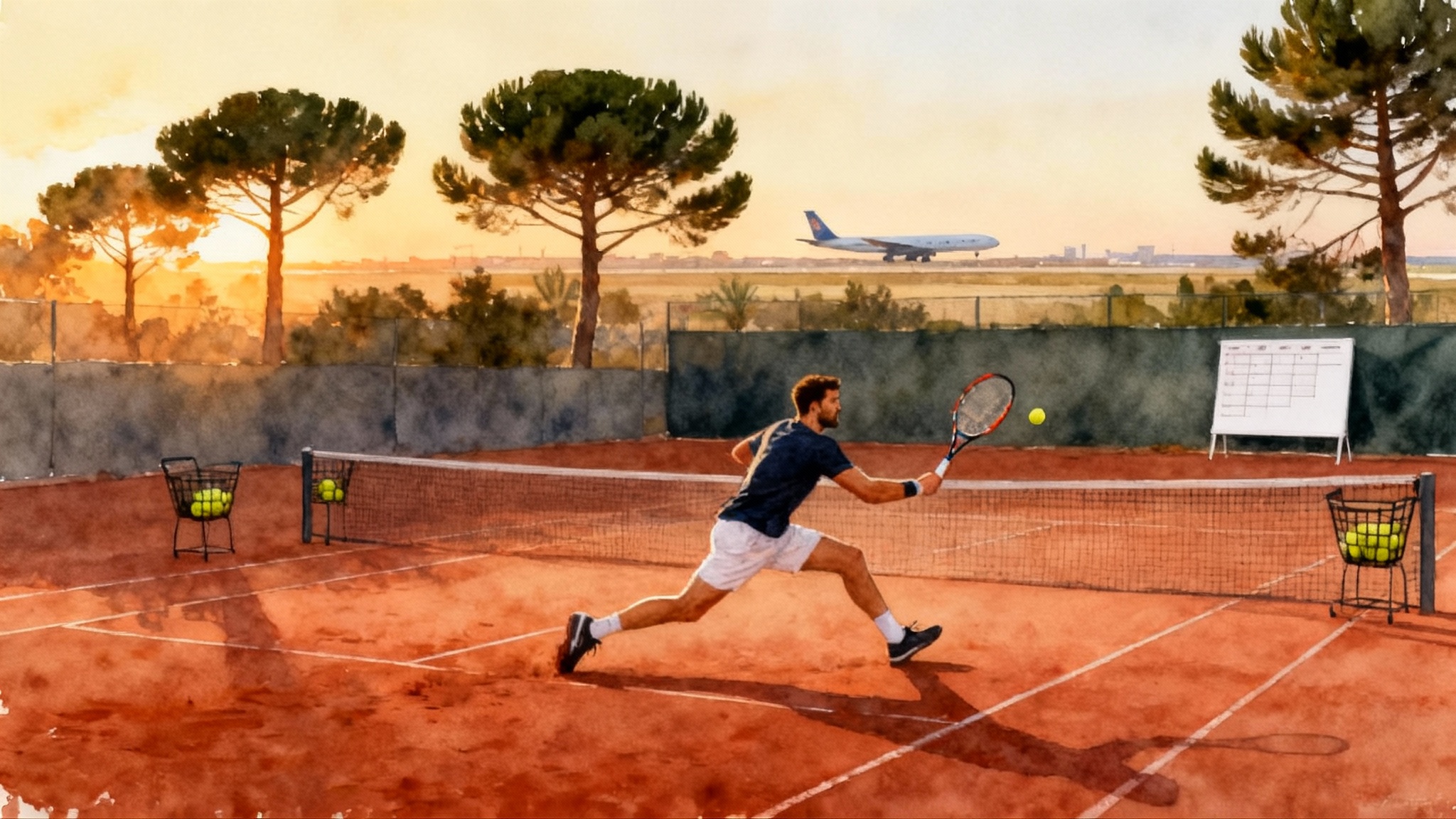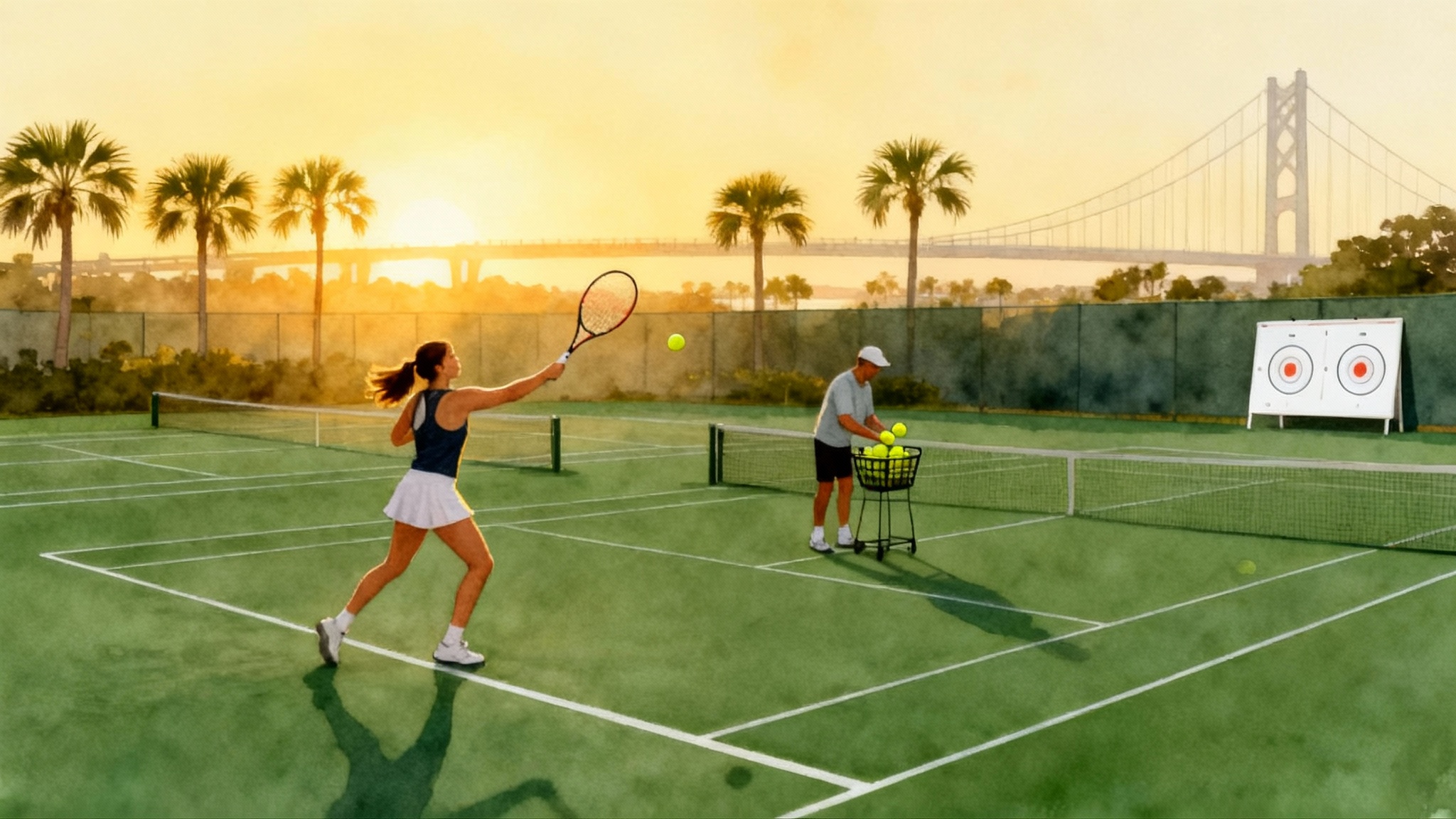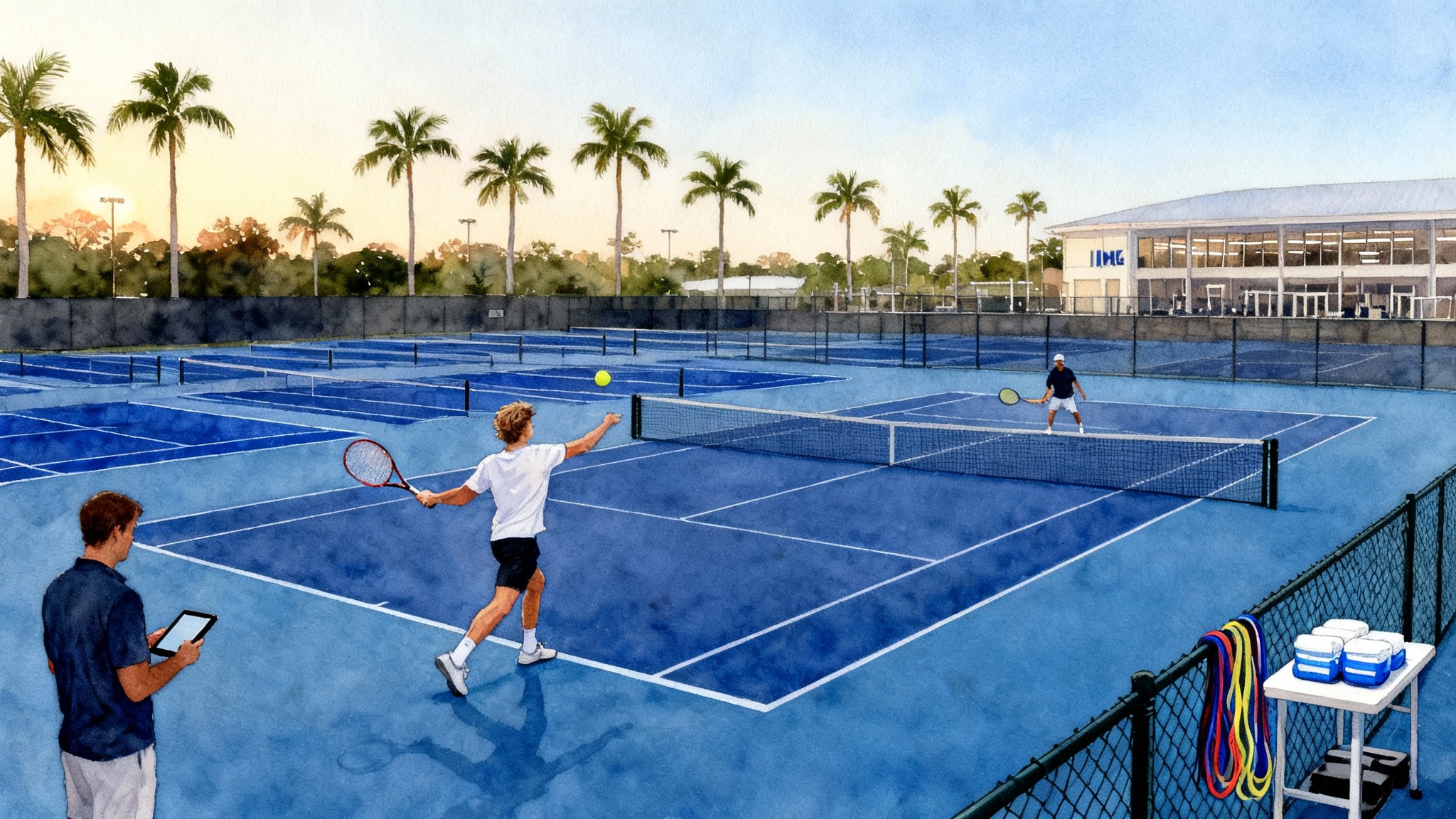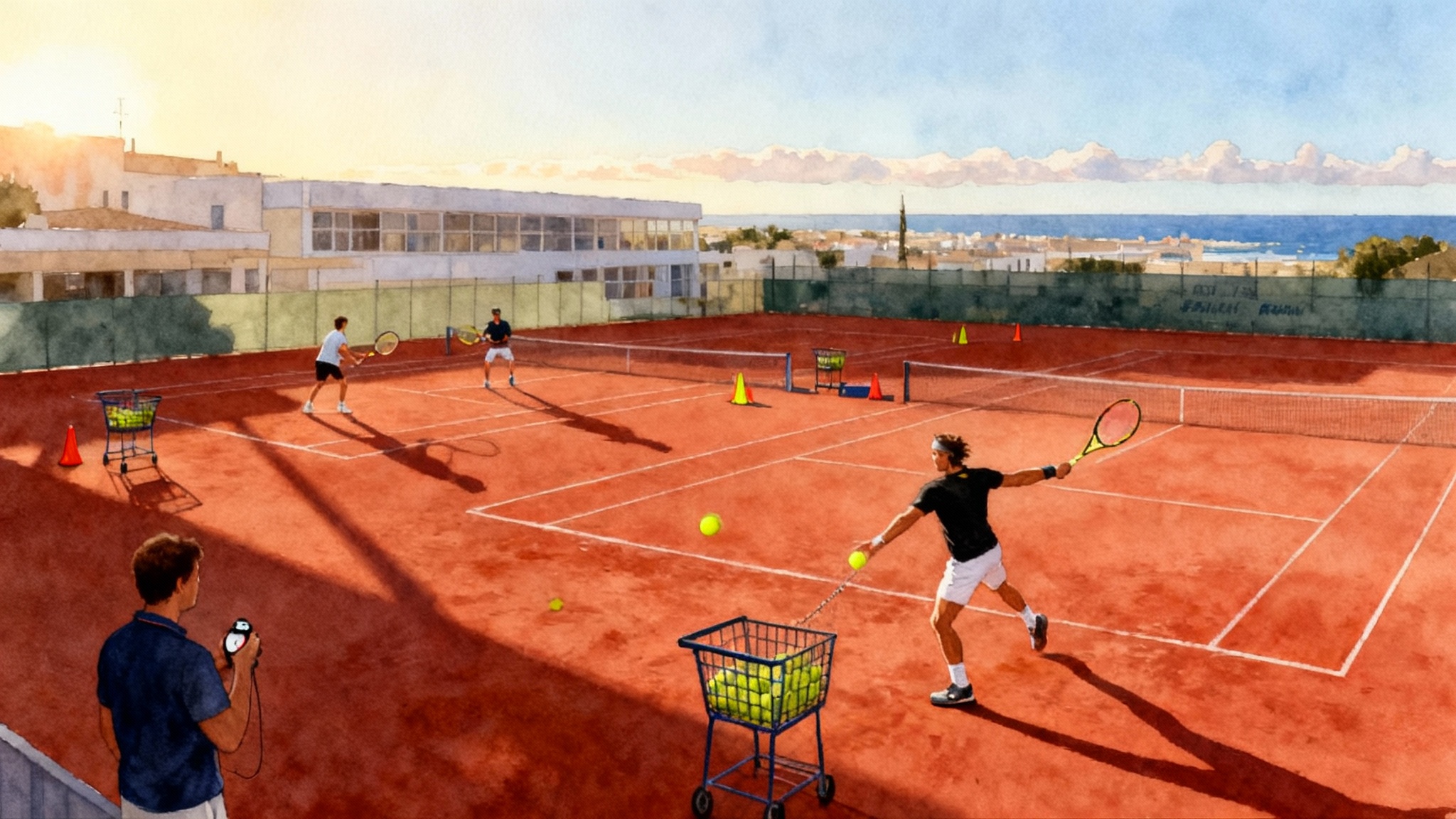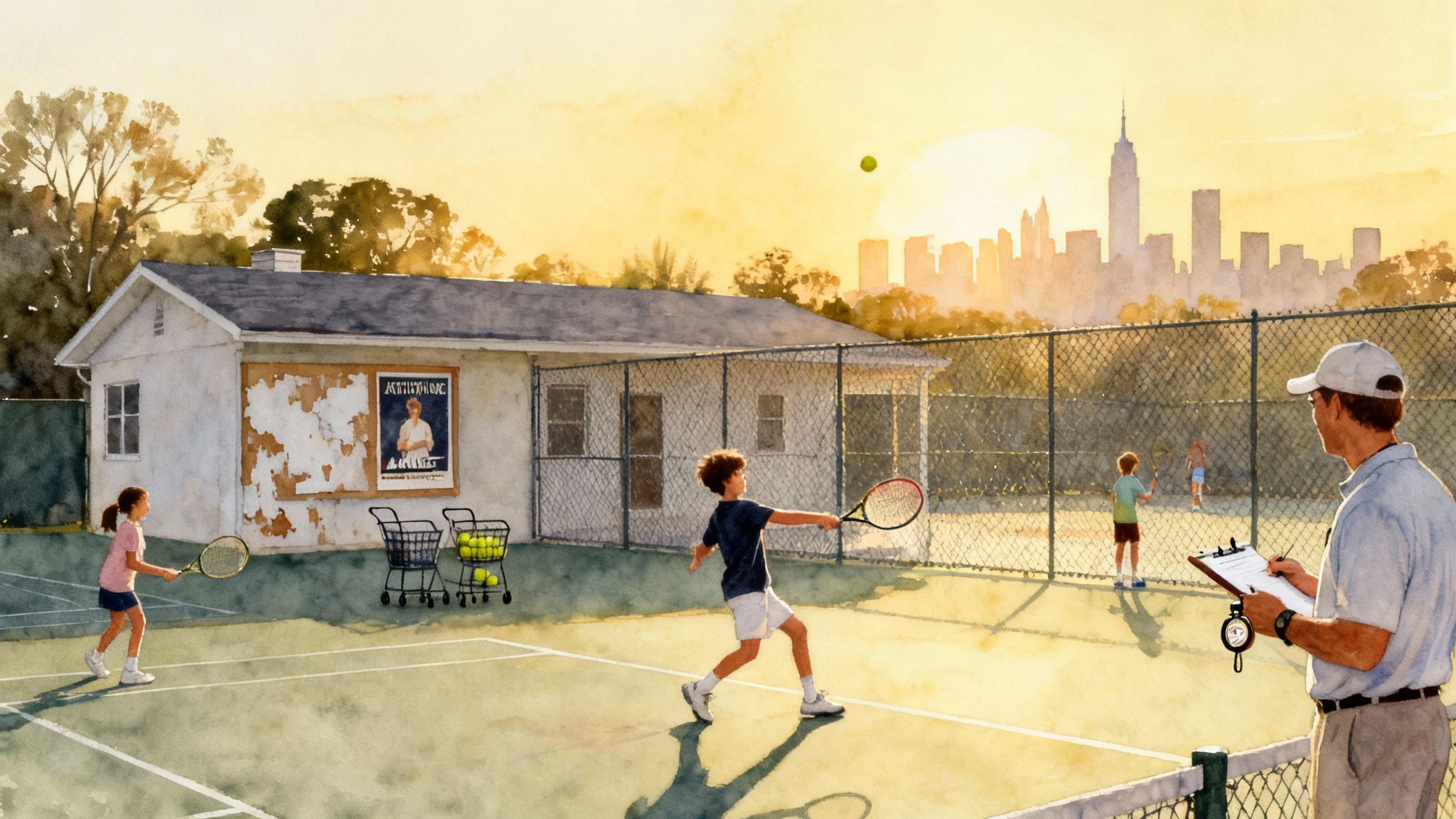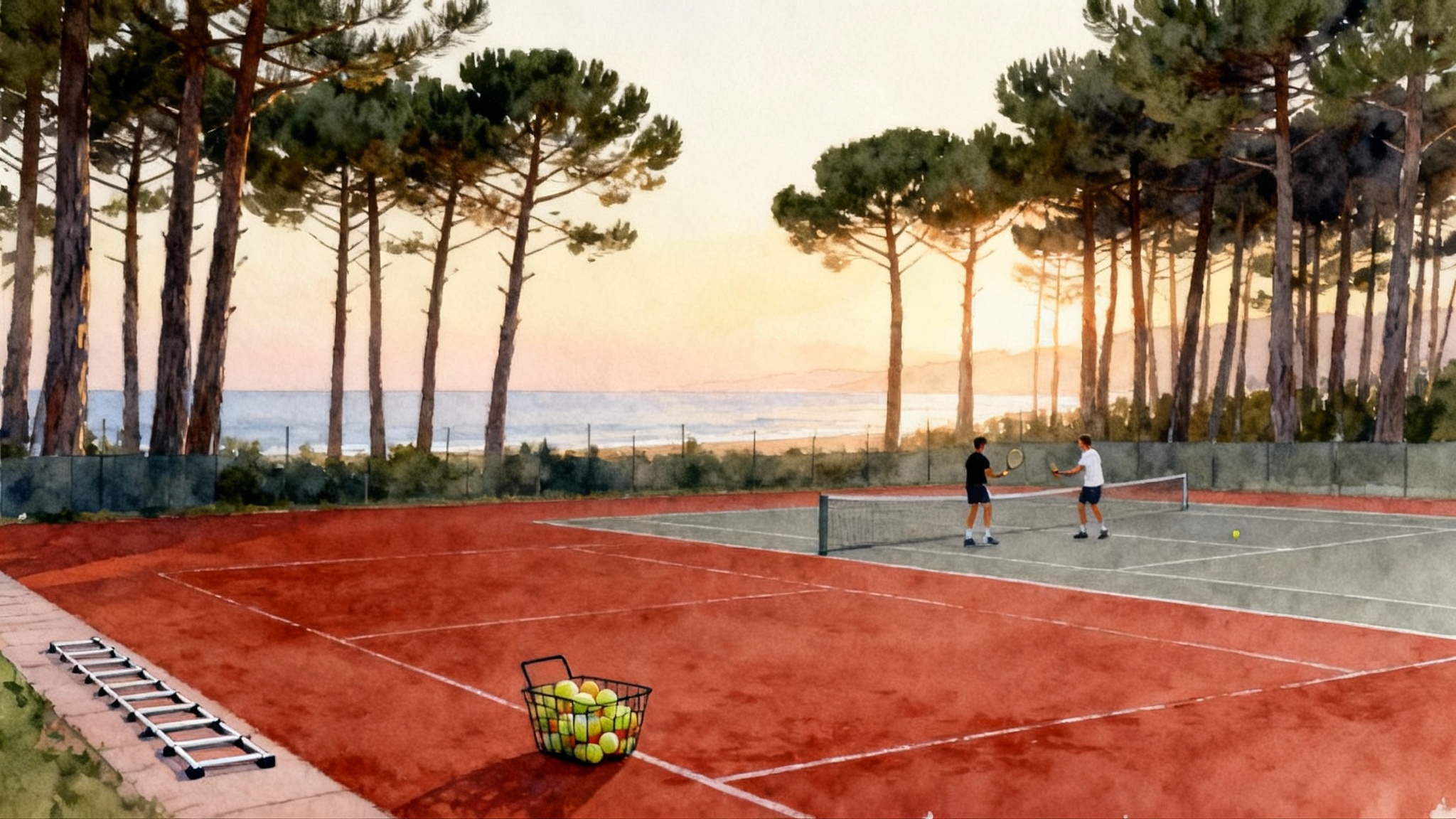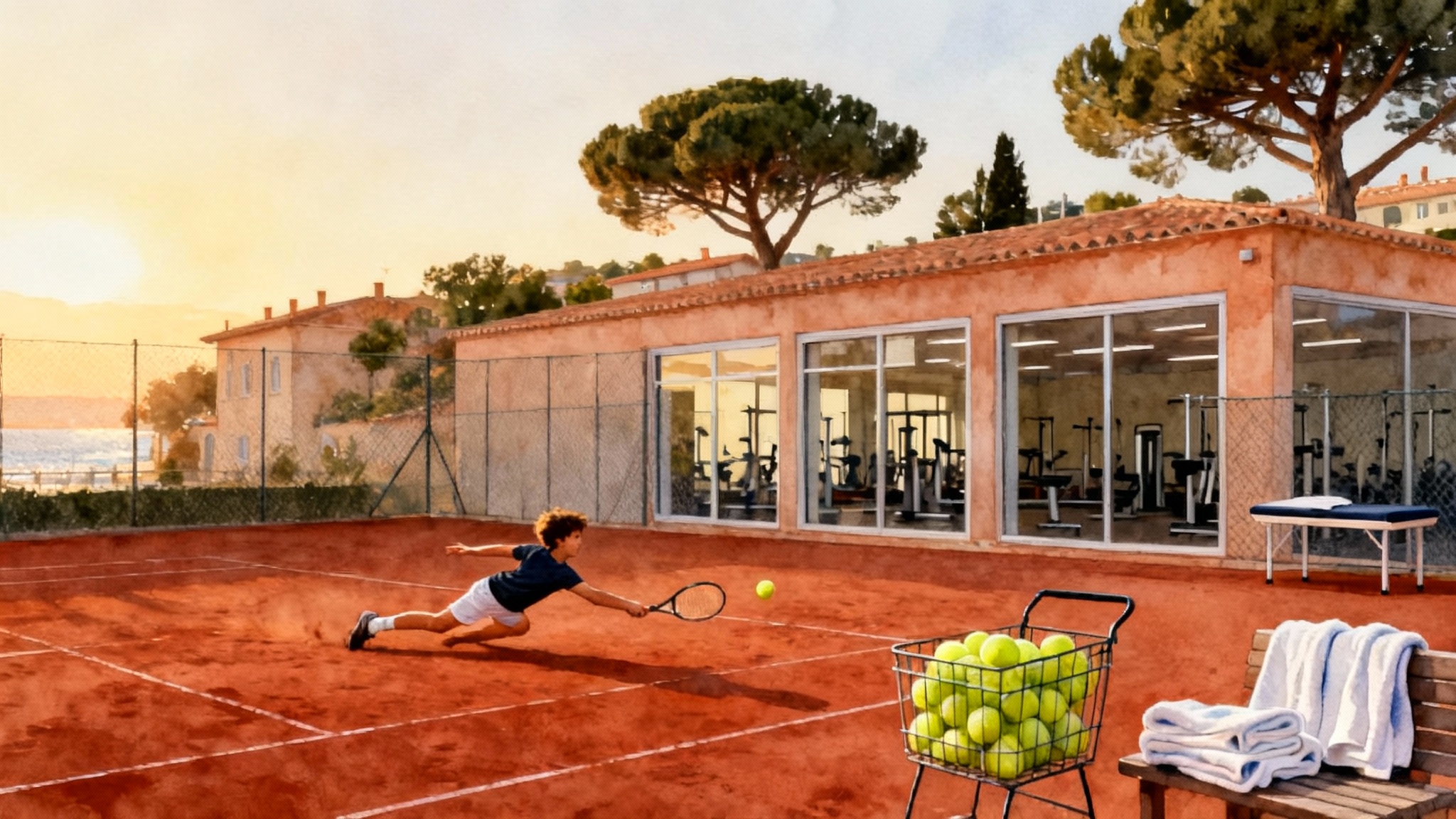From Piatti Academy to World No. 1: Jannik Sinner’s Playbook
Jannik Sinner left home at 13 for Riccardo Piatti’s academy, skipped most juniors, climbed through Futures and Challengers, won the 2019 Next Gen title, then rebuilt his team in 2022 en route to multiple majors and World No. 1. Here is the family playbook.
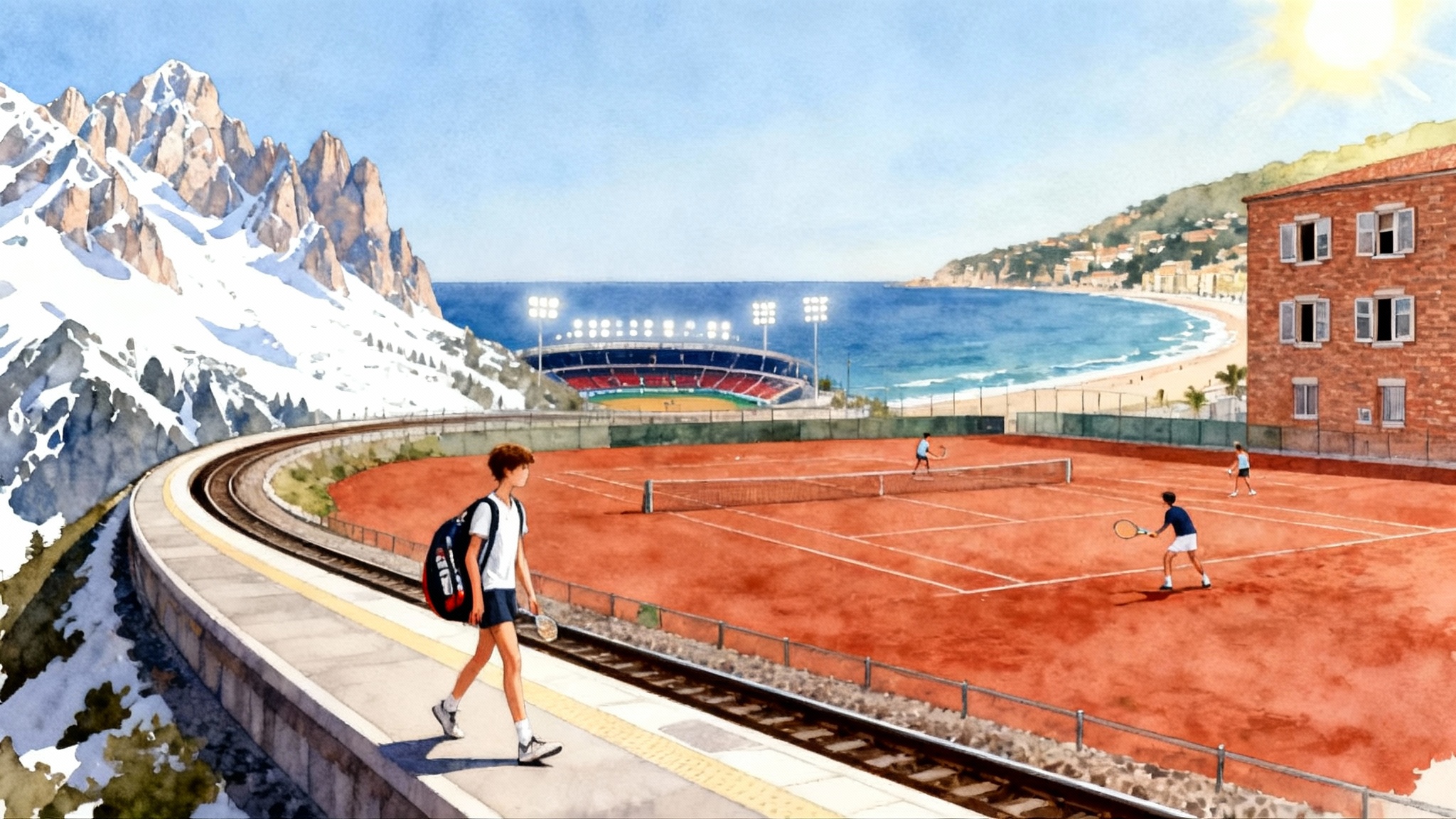
Why this story matters to families
Jannik Sinner’s rise is not a fairy tale. It is a set of decisions that any tennis family can study and adapt. He left the mountains of South Tyrol at 13 to live and train full time in Bordighera with Riccardo Piatti, kept a lean junior schedule, climbed a clear ladder through Futures and Challengers, won the 2019 Next Gen ATP Finals in Milan, then made a pivotal coaching change in 2022 and kept improving until he reached World No. 1 with multiple majors to his name. When you strip away the headlines, what remains is a repeatable pathway and a set of choices about environment, schooling, and skill priorities.
Sinner became the first Italian to reach the top of the men’s rankings on June 10, 2024, a surge built on, among other milestones, the Australian Open and the United States Open that season. The ATP’s press release memorializing that moment is useful for families tracking real timelines and levels. See the official note as he reaches No. 1 in the rankings.
For more examples of academy-built pathways, compare this playbook with How Equelite forged Carlos Alcaraz and Emilio Sánchez Academy forged Dimitrov.
The decision at 13: why relocate to a high-performance base
At 13, Sinner moved hundreds of miles from his alpine home to Bordighera. This was not about shiny facilities. It was about stacking advantages that were hard to find locally:
- Daily access to elite coaches who shared a clear technical language
- A cohort of older, stronger hitters who could expose gaps fast
- Surfaces and schedules that mirrored the pro tour
- A boarding setup that made training the default, not an exception
Think of a high-performance base like a greenhouse in winter. Plants grow in the wild, but the greenhouse controls light, heat, water, and spacing so growth is more predictable. Not every 13-year-old needs a greenhouse. The relocation question is not age. It is readiness and fit.
Signs relocation may make sense:
- The player is consistently dominating regional peers without being stretched in practice
- The family cannot build a weekly load of 12 to 16 quality hours with varied sparring partners at home
- The player craves more, asks for extra reps, and shows emotional steadiness living away from home
- The academy offers boarding, transparent academics, and a road map to the professional pathway
The lean junior schedule: less tournament mileage, more skill density
Sinner did not chase junior points or junior Grand Slams. He played sparingly, choosing practice blocks and select events where the level matched his goals. The logic was simple:
- Reducing travel churn creates room for technical work and strength development
- Skipping prestige events avoids patterning a junior game that does not scale to pros
- Training with high-level seniors simulates the ball speed, depth, and discipline of the professional game
For many families, the hardest part of a lean junior plan is psychological. It feels safer to collect trophies. The smarter test is whether the player’s habits would survive on a slow day in a small professional event, where no one gives you free points. If the answer is no, keep building.
The ladder: Futures to Challengers to Milan
Sinner’s first professional steps were not glamorous. International Tennis Federation Futures events offered real resistance and cheap lessons. He then moved into ATP Challenger draws, a tier with more week-in, week-out depth. Only after proving repeatability there did he break through on the big stage in Milan at the 2019 Next Gen ATP Finals. That progression matters more than the dates. The rule of thumb for moving up a tier:
- Three straight weeks competing, with at least one deep run and competitive losses, suggests you are ready to test the next level
- One isolated hot week can be noise; look for patterns over a month
- Use practice quality on site as a signal. If you can win baseline games to 11 against established players between matches, you belong in that tier
Families can mimic this ladder. Calendar in 8 to 10 week blocks, not isolated tournaments. Protect training windows between blocks. Let ranking follow performance, not the other way around.
The 2022 pivot: keep the base, add new layers
After years with Piatti, Sinner made a clean break in early 2022, then built a new team with Simone Vagnozzi and, later, Darren Cahill. He did this without discarding the foundations Piatti had cemented. The split was publicly confirmed at the time, with Sinner thanking Piatti’s staff and signaling a fresh phase. For reference, see how he confirmed his split with Riccardo Piatti.
This is a blueprint for young pros and advanced juniors: when you change coaches, decide what must stay. Sinner kept his backhand DNA, his return intent, and his movement patterns. The new team layered on serve variation, point construction detail, and physical robustness. That continuity is why the results accelerated rather than dipped.
Technical priorities to build early
You cannot copy Sinner’s talent, but you can copy the order of operations.
- Serve that starts points on your terms
- Prioritize a stable toss window that does not reveal direction
- Train four targets per box. Out wide, body, and up the T are not enough. Map the mini-zones within each target and keep session-by-session hit charts
- Build a second serve that clears the net with shape and jumps shoulder high on hard courts. A safe kick second serve lets you defend your forehand from the first ball
- Serve patterns to rehearse: deuce wide, backhand line change; ad T, backhand cross to pin, then forehand step around to finish
- Backhand as a stabilizer and a sword
Sinner’s two-handed backhand is compact, early, and linear. For juniors, copy the sequence, not the speed:
- Preparation switch on the split step, racquet head above hands
- Small unit turn, left hand sets the racquet, right hand guides path
- Contact slightly in front of the lead hip with head still and chest quiet
- Two strikes to master: backhand cross for depth that does not leak long, and a backhand change of line that travels through the court rather than up
Build cross first. Use change of line only when feet are balanced and space allows. The outcome to avoid is the slow, floaty backhand that invites forehand heat.
- Return patterns that create early control
Few juniors get taught return patterns in detail. Start now:
- On first serves, commit to two default responses: a neutral backhand block middle third to buy time, and a forehand chip deep cross when stretched wide
- On second serves, move up, shorten the backswing, and hit a heavy cross backhand that lands deep and central. The goal is a high, heavy ball at the server’s weaker wing
- Rehearse run-around forehand returns against second serves to the ad court. Aim high, heavy, deep, then step inside the baseline and take time away with the next ball
- Movement that fits the patterns
Technical priorities do not exist in a vacuum. The footwork must match. Train the drop step and crossover on the deuce side for backhand line changes. Train the inside-out forehand recovery with a strong first step back to center. Film the first two steps after contact, not only the hit.
When relocation makes sense: a clear checklist
Relocation is not a badge of honor. It is a tool. Use this checklist before you move.
- Performance signal: the player is already top three in the region for the birth year and winning practice sets from a set down
- Training need: the home base cannot consistently provide lefty servers, bigger hitters, and varied surfaces
- Emotional readiness: the player handles setbacks without spiraling and can communicate needs to adults other than family
- Academy proof: the program provides boarding with house parents, academic supervision, and transparent weekly plans; not just courts and a logo
- Trial block: do a two-week live-in trial before you commit. If the player is more alive in week two than week one, it is a fit. If they look dulled by the end of week two, do not sign
Managing academics and boarding like a pro
Boarding does not work without a schooling plan you would defend even if tennis vanished tomorrow. Use these principles.
- Choose a school option with flexible hours and actual teachers. Many academies partner with accredited online programs. Ask for the graduation rate and university placement, not just a brochure
- Set non-negotiables: daily reading time, a math block four days a week, and a weekly written reflection on training. These habits travel to tournament weeks
- Build a quiet hour before lights out. No phone, no video. Stretching, reading, journaling. Sleep is your hidden training block
- Meal plan with feedback loops. If weight drops during travel, add a post-practice recovery shake and a second evening carb source. Ask for quarterly nutrition consults
- Safeguard social health. Identify one adult at the academy who is the player’s person, someone they can approach without an appointment. Put this in writing with the academy director
If you want a template for integrated academics on site, review our ES Academy Barcelona profile.
Sample weekday at a serious academy:
- 7:00 wake, mobility, breakfast
- 8:00 classes
- 10:30 first court block, serve plus one and return patterns
- 12:30 lunch, rest
- 14:00 second court block, point construction and live points
- 15:30 strength, movement, injury prevention
- 17:00 homework block with a teacher present
- 19:00 dinner
- 20:00 recovery, journaling, quiet hour
- 21:30 lights out
How to transition from academy coach to a pro team without losing continuity
Sinner’s shift in 2022 shows how to carry your game forward. Families and coaches can formalize the handover with a Performance Passport. Build it six months before a change.
Contents of a robust Performance Passport:
- Technical language dictionary. The exact cue words that work for serve toss, backhand timing, and return posture. New coaches can use the same words from day one
- Pattern library. Ten most used point patterns on deuce and ad, with video clips and notes on when to abandon the pattern
- Constraint drills. The three drills that fix the player fastest when timing is off. For example, backhand down the line with a two-ball feed, first ball heavy cross, second line change through the middle third
- Physical benchmarks. Five key tests with dates: standing broad jump, five-zero-five agility, medicine ball throw, pull ups, and a court sprint split time. New staff can overlay their own targets
- Injury and load history. Weeks per year above 18 hours on court, growth spurts, any overuse flags, and what worked during closures
- Tournament map. Which venues and conditions have historically produced the best performance, which ones have caused issues, and why
When a new head coach arrives, keep one carryover voice for six months. That can be an assistant, a physio who knows the body, or a data person who tracks patterns. The point is not nostalgia. It is preserving speed of understanding.
What changed with the new team
With Simone Vagnozzi and Darren Cahill, Sinner’s serve variety improved, his patterns got crisper, and his decision making became calmer in long rallies. Look at three practical tweaks that families can apply even at a junior level:
- Serve start height slightly higher with a more repeatable toss window, allowing routine free points in early rounds of events
- Forehand tempo softened in neutral, then spiked on finishes, which reduces spray and saves energy across tournaments
- Return position edged up a half step on second serves, which cut the opponent’s time and made the first strike more predictable
None of these changes required reinventing the player. They were layers on a base that Piatti built earlier. That is the lesson. Decide what is core, then add tools.
A parent’s risk map and budget talk
High-performance boarding plus travel often costs what a private school does, sometimes more. Before committing, build a two year budget with three columns:
- Must spend: tuition, boarding, basic travel to domestic events, coaching hours, equipment, and medical
- Could spend: nutrition consults, part-time data analyst, extra massage, and a second stringing machine on site
- Only if funded: extended international travel and wildcard chases that do not fit the performance ladder
Agree in writing how prize money, sponsor money, and appearance fees will be reinvested. Treat the player as a partner in the plan by age 16. Clarity reduces pressure.
The Milan moment, then the majors
The Next Gen ATP Finals in 2019 were a demonstration that Sinner’s game scaled to faster courts and sharper minds. From there, he kept stacking weeks rather than chasing headlines. Years later, the breakthrough season delivered two majors and the top ranking. The timeline matters for families. You are not late if you are building the right skills in the right order. A late surge only arrives on a strong base.
A practical checklist inspired by Sinner’s path
Relocation
- Trial living away from home in two blocks of ten days over six months
- Audit the academy’s boarding, supervision, academics, and medical support
- Ensure sparring diversity. Lefties, big servers, counterpunchers
Scheduling
- Commit to 8 to 10 week blocks with goals for skills, not just results
- Mix one Futures trip with two training weeks and a local event rather than four straight tournaments
Technical build
- Serve: four targets, second serve shape, and two default patterns per side
- Backhand: cross depth first, line change only from balance
- Return: two first serve blocks, one aggressive second serve pattern
Data and video
- Keep a living clip library of the ten most representative points from each event
- Track first serve percentage by target, and second serve points won when you use the planned pattern
Transition plan
- Create the Performance Passport three months before any coaching change
- Retain one carryover staffer or advisor for a half season
Wellbeing
- Enforce quiet hour and lights out. Protect sleep like a training block
- Assign one adult at the academy as the player’s person and log check-ins
The takeaway for families
Sinner’s climb from a 13-year-old boarder in Bordighera to World No. 1 did not hinge on a single moment. It was a sequence. Move when the environment can no longer stretch you at home. Keep juniors lean so you can invest in skills that scale. Climb the ladder patiently, one tier at a time, learning to win ugly. When you change teams, protect the parts of your game that are your signature and add layers with intent. Do the boring work well, over and over. That is how foundations turn into finals.
In other words, do not chase someone else’s story. Borrow the structure. If you can execute even half of this playbook with discipline and care, your player will be on a path that produces real options, which is the only guarantee worth buying in junior tennis.

